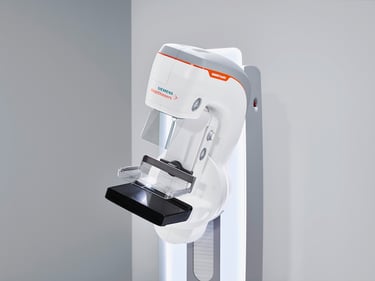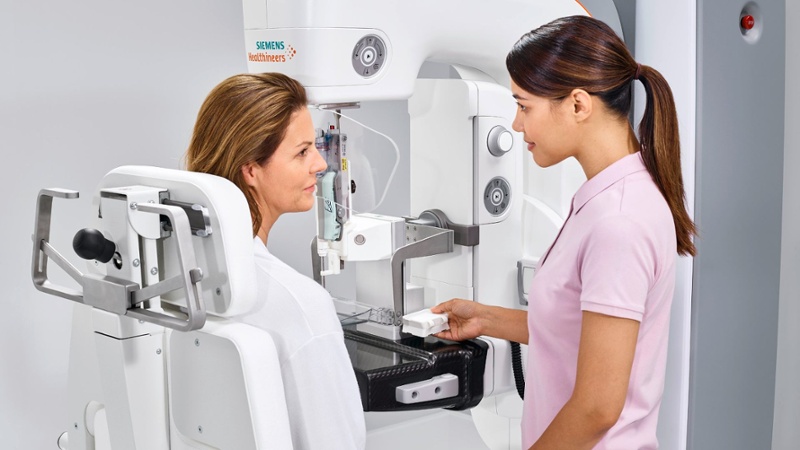 Women are currently the fastest-growing population of veterans. In 2018, women made up 9 percent of United States veterans, and by 2040, it's expected that 17 percent of veterans will be women.
Women are currently the fastest-growing population of veterans. In 2018, women made up 9 percent of United States veterans, and by 2040, it's expected that 17 percent of veterans will be women.
According to a study published by the National Institutes of Health, breast cancer rates could actually be higher in the military population than the general population, meaning that the growing number of women in the military are at a higher risk of developing breast cancer.
As of now, the cause of this risk is unknown, but some believe that exposure to chemicals on duty plays a role. Despite the increasing number of veteran women and the risk of breast cancer associated with their job, less than half of the 171 Department of Veteran Affairs (VA) medical centers offer mammograms.
On June 7, the Making Advances in Mammography and Medical Options for Veterans Act (the MAMMO Act) was signed into law by President Joe Biden. The MAMMO Act outlines new requirements for mammograms and breast cancer treatment by the Department of Veteran Affairs (VA) to make breast imaging services for veterans more accessible and of higher quality.
One of these requirements states that VA facilities must upgrade all mammography services to three-dimensional breast imaging systems, also known as mammography with tomosynthesis or 3D mammo.
The requirements for the VA include:
- Submission of a strategic plan for improving breast imaging services for veterans
- Planning and application of a three-year pilot program to offer telescreening mammography services for veterans without access to breast imaging services at a VA facility
- Study of the availability of access to testing for the breast cancer gene for veterans diagnosed with breast cancer
- An increase in the use of molecular testing and genetic counseling for veterans diagnosed with breast cancer
- The update of policies and directives to ensure the accessibility of breast imaging sites and services at VA facilities for veterans with disabilities
- A report by the Inspector General of the VA to the VA and to Congress on mammography systems furnished by the VA
What the MAMMO Act Means for Providers
The MAMMO Act benefits providers as well as patients. It may seem expensive at first to upgrade all 2D mammography systems to 3D breast tomosynthesis systems. However, it's possible that tomosynthesis systems can actually bring in more revenue.
3D breast digital tomosynthesis systems have an extra CPT code that providers can bill for on top of the original mammogram procedure. This CPT code means that providers earn more revenue from each mammogram with tomosynthesis than with traditional 2D mammograms.
What is 3D Breast Tomosynthesis
Whereas 2D mammograms take a two-dimensional picture of the breast, 3D breast tomosynthesis systems take many images of the breast from different angles. These images are then projected and assembled into a 3D rendering of the patient’s breast, which allows the radiologist to look at the breast tissue in thinner segments with more precision.
This type of rendering has multiple benefits:
- More accurate breast density estimates – Dense breasts or breasts with a lot of fibrous and glandular tissue (as opposed to fatty tissue) are very common. In fact, around half of women have dense breast tissue. Radiologists can better identify these dense tissues using tomography systems, leading to more accurate breast density estimates.
- Improved cancer detection -- Women with dense breasts may have a higher risk of developing cancer, and the fibrous and glandular tissues in dense breasts can hide tumors, making cancer hard to detect. Tomosynthesis can improve cancer detection and reveal hidden tumors by gathering images that separate the overlaying layers of tissue.
These benefits vary between different tomosynthesis systems, depending on image quality and depth resolution. The number of projections, the size of the angle, and the algorithm used to reconstruct the images into a 3D rendering are all factors to consider.

What to look for in a 3D breast tomosynthesis system
Whether you're in a VA facility or any other organization, when upgrading your systems from 2D mammography to breast tomosynthesis, it's important to consider which features are best for your facility, your technologists and, most importantly, your patients.
Some factors to consider are:
- Scan angle – Look for a system with a wide scan angle. The wider the scan angle, the better the depth-resolution of images. This means clearer images that make it easier for radiologists to read, detect abnormalities and diagnose with confidence. The widest scan angle in tomosynthesis is the 50-degree angle on the MAMMOMAT Revelation by Siemens Healthineers.
- Patient comfort – Mammograms can be stressful for patients, so it is important to reduce any discomfort patients might feel while undergoing the exam. Speeding up the imaging process and providing quick results can help ease patients’ worries. Features such as the Personalized Soft Compression in the MAMMOMAT Revelation improve patient experience by personalizing compression to each patient’s breast. This can be more comfortable for patients, and it can better position the breast for higher quality images.
- Breast density measurement technology – Most breast imaging systems require the radiologist to estimate breast density when reading scans after the patient has left. If a patient has dense breasts, they must come back later for more imaging procedures.Some tomosynthesis systems can automatically measure breast density during the initial examination. With automated breast density measurement, the MAMMOMAT Revelation allows the technologist to categorize a patient’s risk-factor and determine whether the patient needs additional imaging right away, streamlining the imaging process and relieving patient stress.
- Integrated biopsy specimen imaging – Finding a tomosynthesis system that offers biopsy imaging tools in addition to mammography can shorten the time it takes to collect and study biopsy samples.
The MAMMOMAT Revelation has HD breast biopsy technology that lets technologists click on a specific area of breast tissue with +/- 1 mm accuracy. After the tissue is acquired, the technologist can use the integrated biopsy imaging tool and visualize the sample at their station. This process can be quicker, as it potentially eliminates the need to move samples from room to room for the right equipment.
It is important to choose a tomosynthesis system that fits your facility’s and your patients’ needs. 3D breast tomosynthesis can potentially increase revenue from mammograms, make breast images easier for technologists to read, and raise the standard of care for patients.
As the population of women in military service grows, medical services for veterans must grow too. The MAMMO Act is a step in the right direction towards accessible, high-quality care for veterans.







Comments